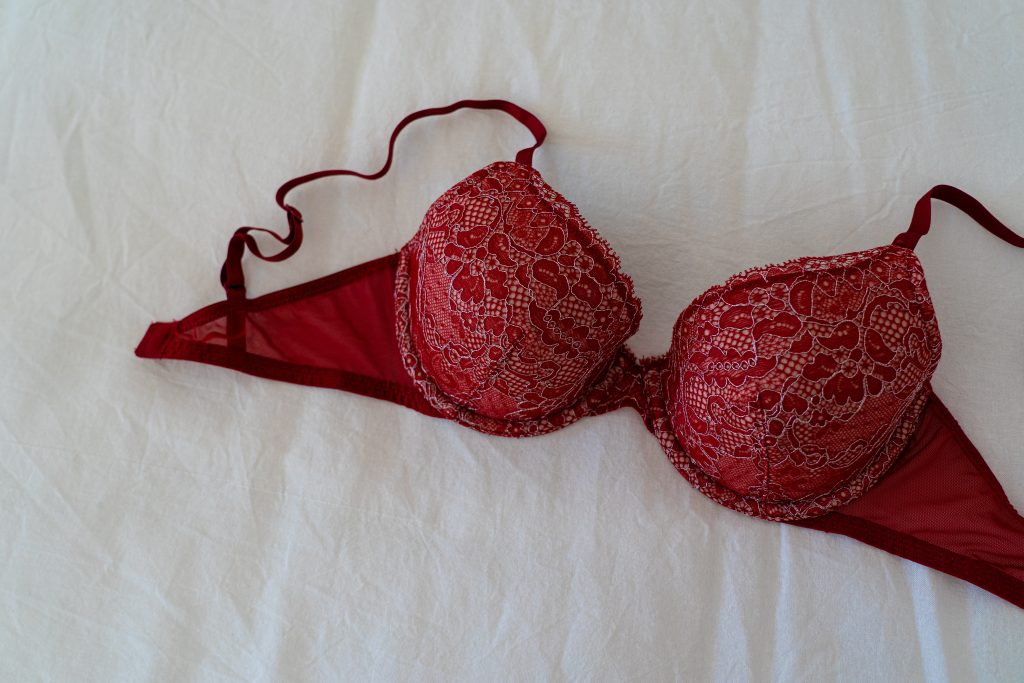How Menopause Can Affect Your Breasts: Understanding the Changes
Menopause is a natural and normal process that all women go through as they age. During this time, the body undergoes significant hormonal changes as it transitions from its reproductive years to the postmenopausal phase. While many women experience a range of physical and emotional symptoms during menopause, one change that some may notice is an increase in breast size. In this article, we’ll take a closer look at the reasons why breasts may get bigger after menopause, and what women can do to feel comfortable and confident in their bodies during this time.
Menopause is a natural biological process that marks the end of a woman’s reproductive years. It typically occurs between the ages of 45 and 55, although it can occur earlier or later for some women. As women approach menopause, they may experience a range of physical and emotional symptoms as their hormones begin to fluctuate. In this article, we will discuss some of the most common menopause symptoms and how to manage them.

The Science Behind Menopause and Breast Enlargement
The aim of this study was to investigate the frequency and potential causes of increased breast size after menopause. A total of 1,130 postmenopausal women aged 54-71, who were part of a population-based breast cancer screening project called the DOM-project in Utrecht, The Netherlands, were surveyed. Participants were asked about changes in breast size, as well as other factors such as parity, age at first childbirth, breastfeeding history, age at menarche, age at menopause, hormone replacement therapy (HRT) use, and weight fluctuations between the ages of 30 and the time of the survey. In addition, height, weight, waist circumference, and hip circumference were measured at various screening rounds.
The results showed that 18.6% of the women reported needing a larger bra due to changes in breast size, while only 1.7% reported needing a smaller bra. Factors such as weight gain, waist circumference, hip circumference, Quetelet’s index (a measure of body mass index) at the third screening, Quetelet’s index at the first screening, waist-to-hip ratio, and years since menopause were significantly associated with increased breast size.
The study concluded that approximately 1 in 5 women experienced an increase in breast size after menopause, with weight gain being the most significant contributing factor. The findings suggest that managing weight fluctuations through healthy lifestyle habits and exercise may help reduce the risk of experiencing breast size increase after menopause.
Factors Affecting Breast Size Changes after Menopause
| Factor | Explanation |
|---|---|
| Hormonal Changes | Declining levels of estrogen and progesterone can cause a shift in fat distribution, leading to increased breast size. |
| Weight Gain | Slowing metabolism, changes in diet, and decreased activity levels during menopause can contribute to weight gain. |
| Muscle Loss | Loss of muscle mass, particularly in the chest muscles, can affect breast appearance and support. |
| Pregnancy & Breastfeeding | Pregnancy and breastfeeding can cause temporary breast enlargement due to hormonal changes and increased glandular tissue. Some changes may persist even after breastfeeding ends. |
| Accumulation of Fat | Fat cells in the breasts can accumulate more fat due to increased sensitivity to insulin as estrogen levels decline. |
| Breast Cancer | Although rare, breast cancer can cause changes in breast size. It is important to monitor breast health regularly. |
| Supportive Bra | Wearing a properly fitting bra can provide support and alleviate discomfort caused by larger breasts. |
| Healthy Weight & Exercise | Maintaining a healthy weight through diet and exercise can improve breast health and appearance. Regular exercise, including chest-strengthening exercises, can enhance muscle tone and provide added breast support. |
| Breast Reduction | In severe cases of discomfort or pain, breast reduction surgery may be an option, but it should be carefully considered. |

Navigating the Waves of Menopause: Understanding the Most Common Symptoms
Menopause is a time of awakening, a time when women’s bodies and lives change in profound and meaningful ways. – Christiane Northrup
Hot Flashes
Hot flashes are one of the most common symptoms of menopause. They are characterized by a sudden feeling of warmth or heat that spreads through the body, often accompanied by sweating and a rapid heartbeat. Hot flashes can be uncomfortable and disruptive, and they can occur at any time of the day or night. While the exact cause of hot flashes is not fully understood, they are thought to be related to changes in hormone levels.
To manage hot flashes, women can try to identify and avoid triggers that can bring them on, such as spicy foods, caffeine, alcohol, and stress. Wearing lightweight, breathable clothing and using a fan or air conditioning can also help to reduce the intensity of hot flashes. Some women may also benefit from hormone replacement therapy or other medications that can help to regulate hormone levels.
Mood Changes
Mood changes are another common symptom of menopause. As hormone levels fluctuate, women may experience mood swings, irritability, anxiety, and depression. These emotional changes can be challenging to manage, especially when combined with other physical symptoms of menopause.
To manage mood changes, women can try to maintain a healthy lifestyle that includes regular exercise, a balanced diet, and stress reduction techniques such as meditation or yoga. Getting enough sleep is also important for emotional well-being. Women who are experiencing significant mood changes may benefit from talking to a mental health professional or their healthcare provider about treatment options.
Sleep Disturbances
Many women experience sleep disturbances during menopause, including difficulty falling asleep, waking up frequently during the night, and waking up too early in the morning. Sleep disturbances can be caused by hot flashes, mood changes, and other physical symptoms of menopause.
To manage sleep disturbances, women can try to establish a consistent sleep routine, avoid caffeine and alcohol before bedtime, and create a comfortable sleep environment that is dark, quiet, and cool. Some women may also benefit from taking sleep aids or other medications to help them sleep.
Vaginal Dryness
Vaginal dryness is a common symptom of menopause that can cause discomfort and pain during sexual activity. As hormone levels decline, the tissues in the vagina may become less elastic and produce less lubrication.
To manage vaginal dryness, women can use water-based lubricants or moisturizers to help reduce discomfort during sexual activity. Some women may also benefit from hormone replacement therapy or other medications that can help to improve vaginal elasticity and lubrication.
Bone Loss
As women age and go through menopause, they may experience a loss of bone density, which can increase the risk of fractures and osteoporosis. Women who are postmenopausal are at the greatest risk of bone loss, but it can also occur during perimenopause.
To manage bone loss, women can engage in weight-bearing exercise, consume a diet rich in calcium and vitamin D, and consider taking calcium and vitamin D supplements. Women who are at high risk of bone loss or osteoporosis may also benefit from medication to help improve bone density.
Remember, menopause is a natural biological process that marks the end of a woman’s reproductive years, but not meaning the end of the world. As hormone levels fluctuate, women may experience a range of physical and emotional symptoms, including hot flashes, mood changes, sleep disturbances, vaginal dryness, and bone loss. By understanding these symptoms and implementing strategies to manage them, we can continue to live healthy and fulfilling lives.

Hormonal Changes During Menopause
Menopause is a time of change and growth. It’s a time for women to redefine themselves and embrace their unique gifts and talents. – Dr. Sara Gottfried
The hormonal changes that occur during menopause are a significant factor in the increase in breast size that some women may experience. As women age, their levels of estrogen and progesterone decrease, which can cause a number of physical changes in the body. One of these changes is a shift in the distribution of body fat, with more fat being stored in the midsection and less in the hips and thighs. However, some women may experience an increase in breast size as the body compensates for this shift.
Estrogen is a hormone that is primarily responsible for breast development and growth during puberty and early adulthood. When estrogen levels decline during menopause, the breast tissue may become less dense and less firm, resulting in a more rounded and fuller appearance. Some women may also experience a slight increase in breast size as the body tries to maintain the balance of fat in different areas of the body.
Another reason for an increase in breast size after menopause is the accumulation of fat in the breast tissue. As estrogen levels decline, the body’s fat cells become more sensitive to insulin, which can lead to the storage of excess fat in the breasts. This can cause breasts to become larger and more full.
Weight Gain and Muscle Loss
In addition to hormonal changes and fat accumulation, other factors may also contribute to an increase in breast size after menopause. For example, weight gain and changes in muscle mass can also affect breast size. Many women may experience weight gain during menopause due to a slowing metabolism and changes in diet and activity level. This, in turn, can cause breasts to become larger.
Changes in muscle mass can also affect breast size since the breast tissue is supported by the muscles in the chest wall. As women age, they may experience a loss of muscle mass, which can cause the breasts to appear larger and more full. Strengthening the chest muscles through exercises such as push-ups, chest presses, and dumbbell flys may help to improve the appearance of the breasts and provide added support.
Pregnancy and Breastfeeding
While pregnancy and breastfeeding occur before menopause, they can also have an impact on breast size after menopause. Women who have had children may experience changes in breast size due to pregnancy and breastfeeding. During pregnancy, the body produces more hormones that can cause breast tissue to expand, and breastfeeding can also cause breasts to become larger and heavier as they fill with milk.
In some cases, breast size may remain larger even after a woman has finished breastfeeding. This is due to the changes that occur in the breast tissue during pregnancy and breastfeeding, which can result in more glandular tissue and less fatty tissue. As a result, the breasts may appear fuller and more rounded, even after breastfeeding has ended.
Breast Cancer
While an increase in breast size after menopause is usually nothing to worry about, it’s important to note that breast cancer can also cause changes in breast size. Breast cancer can cause the breast tissue to become thicker and denser, which can cause the breast to appear larger. Other signs of breast cancer may include a lump or thickening in the breast, nipple discharge, or changes in the texture or appearance of the breast skin.
If you notice any changes in your breast size or have concerns about breast health, it’s important to talk to your healthcare provider. Your provider can perform a breast exam and recommend any necessary tests, such as a mammogram or biopsy, to rule out any serious conditions.
Managing Menopause: What to Do if Your Breasts Get Bigger
| Actions | Description |
|---|---|
| Wear a Supportive Bra | Choose a well-fitting bra that provides adequate support and helps alleviate discomfort or pain caused by larger breasts. |
| Maintain a Healthy Weight | Follow a balanced diet and engage in regular exercise to support overall health and potentially improve breast health and appearance. |
| Exercise | Incorporate chest-strengthening exercises, such as push-ups or chest presses, to improve muscle tone and provide added support to the breasts. |
| Seek Medical Attention | If experiencing significant discomfort or pain due to larger breasts, consult with a healthcare provider for personalized advice and potential treatment options. |
| Breast Reduction Surgery | In severe cases, breast reduction surgery may be an option to reduce breast size and alleviate associated symptoms. Consult with a qualified healthcare provider to discuss the risks and benefits. |
While an increase in breast size after menopause may be a natural part of the aging process, there are things that women can do to feel comfortable and confident in their bodies.
One option is to wear a supportive bra that fits well and provides adequate support. This can help to alleviate any discomfort or pain associated with larger breasts and provide added support to the chest muscles.
Maintaining a healthy weight and engaging in regular exercise can also help to improve breast health and appearance. Regular exercises, such as jogging, walking, or swimming, can help to improve muscle tone and reduce body fat, which can help to improve the appearance of the breasts. Additionally, maintaining a healthy diet that’s rich in fruits, vegetables, and lean proteins can help to support overall health and well-being.
In some cases, breast reduction surgery may be an option for women who are experiencing discomfort or pain due to large breasts. This type of surgery can help to reduce breast size and alleviate any associated symptoms, such as back or shoulder pain. However, it’s important to note that breast reduction surgery is a major procedure that comes with risks and should only be considered after discussing the pros and cons with a qualified healthcare provider.
In conclusion, an increase in breast size after menopause is a normal and natural part of the aging process for many women. While hormonal changes, weight gain, and muscle loss can all contribute to changes in breast size, there are things that women can do to feel comfortable and confident in their bodies. Wearing a supportive bra, maintaining a healthy weight and exercise routine, and seeking medical attention for any concerns are all important steps that women can take to support breast health and overall well-being.
FAQ Section
Question: How can I reduce my breast size after menopause?
Reducing breast size after menopause can be a common concern. While there’s no guaranteed method to specifically target breast size reduction, adopting a healthy lifestyle can contribute to overall weight loss, which may lead to some reduction in breast size. Engaging in regular exercise, maintaining a balanced diet, and consulting with a healthcare professional about potential hormone therapies or surgical options can help you explore possibilities that suit your individual needs and desires.
Question: Why have my breasts gotten bigger as I’ve gotten older?
The changes that occur in breast size as we age can be influenced by various factors. Hormonal fluctuations, especially during menopause, can lead to an increase in breast tissue and overall breast size. Additionally, weight gain or a shift in fat distribution patterns commonly experienced with aging can contribute to larger breasts. Remember, every individual’s journey is unique, and it’s important to embrace your body as it evolves.
Question: Why do breasts get bigger in your 60s?
As you enter your 60s, the natural aging process affects your body in several ways, including your breasts. One of the key factors behind the increase in breast size during this stage is the redistribution of fat due to hormonal changes. Estrogen levels may decrease while progesterone levels remain relatively stable, leading to fat accumulation in the breast tissue. These changes, coupled with the loss of skin elasticity over time, can contribute to a larger breast appearance.
Navigating Menopause Weight Gain: Understanding the Causes and Finding Solutions
Question: Why is my breast getting bigger and heavier?
Breasts getting bigger and feeling heavier can be attributed to various factors. Hormonal imbalances, such as an increase in estrogen or a decrease in progesterone, can cause breast tissue to expand. Weight gain or fluctuations can also lead to an increase in breast size, as breasts consist of fatty tissue. Furthermore, water retention, certain medications, or medical conditions can contribute to breast enlargement. Consulting with a healthcare professional can help you understand the underlying cause and explore suitable options.
Question: Why are my breasts getting bigger after 50?
Breast size changes after the age of 50 are often influenced by hormonal shifts that occur during menopause. As estrogen levels decline, the body compensates by increasing the number of estrogen receptors in breast tissue, potentially leading to tissue expansion and larger breasts. Additionally, weight gain and changes in body composition that commonly accompany aging may contribute to an increase in breast size. Embrace these changes as a natural part of your unique journey.
Question: Do breasts get fatter with age?
Yes, breasts can tend to accumulate more fatty tissue with age. This is primarily due to hormonal changes, particularly during menopause, when estrogen levels decrease and fat distribution patterns shift. The breasts may become fuller and appear larger as a result. However, it’s important to remember that every person’s body is unique, and these changes occur differently for each individual. Embracing and accepting your body as it evolves is key to nurturing a positive self-image.
Remember, if you have concerns about changes in your breast size or any other aspect of your health, it’s always best to consult with a qualified healthcare professional who can provide personalized guidance and support.
Sources:
Measures of adiposity and risk of breast cancer in older postmenopausal women
Banishing Menopause Belly Fat: Your Ultimate Guide to Losing Weight during Menopause





